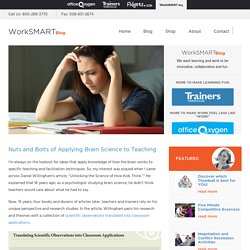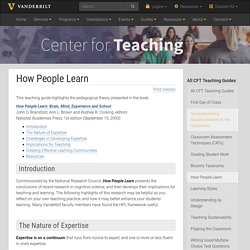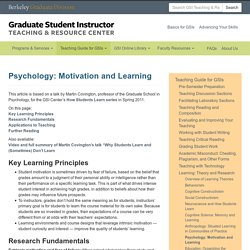

Nuts and Bolts of Applying Brain Science to Teaching. I’m always on the lookout for ideas that apply knowledge of how the brain works to specific teaching and facilitation techniques.

So, my interest was piqued when I came across Daniel Willingham’s article, “Unlocking the Science of How Kids Think.”* He explained that 16 years ago, as a psychologist studying brain science, he didn’t think teachers would care about what he had to say. Now, 15 years, four books and dozens of articles later, teachers and trainers rely on his unique perspective and research studies. In the article, Willingham pairs his research and theories with a collection of scientific observations translated into classroom applications.
Putting Theory into Action As I was synthesizing his recommendations, I was reminded of a handful of tools and approaches that help teachers carry through on the kinds of efforts he suggests: 1) Practice is crucial. SO, allow sufficient classroom time to practice new skills. Interleaved Learning (Brain Hack) Cognitive Load Theory - Learning Skills From MindTools.com. © iStockphotorweisswald Don't overload your brain when you want to learn better. Have you ever been on a course where the trainer went through his material so quickly that you barely learned a thing? Or maybe the content was so complex that it went completely over your head? In this article, we'll look at Cognitive Load Theory (CLT). This takes a scientific approach to the design of learning materials, so that they present information at a pace and at a level of complexity that the learner can fully understand.
How Do We Process Information? Cognitive Load Theory builds upon the widely accepted model of human information processing shown in figure 1 (this was published by Richard Atkinson and Richard Shiffrin in 1968.) It describes the process as having three main parts: sensory memory, working memory and long-term memory. Figure 1: Information Processing Model Adapted from Atkinson, R.C. and Shiffrin, R.M. (1968). Every day, you are bombarded with sensory information. 1. 2. 3. How People Learn. Print Version This teaching guide highlights the pedagogical theory presented in the book: How People Learn: Brain, Mind, Experience and School John D.

Bransford, Ann L. Brown and Rodney R. Cocking, editors National Academies Press; 1st edition (September 15, 2000) Introduction Commissioned by the National Research Council, How People Learn presents the conclusions of recent research in cognitive science, and then develops their implications for teaching and learning. The Nature of Expertise Expertise is on a continuum that runs from novice to expert, and one is more or less fluent in one’s expertise. Expertise is field-dependent. Characteristics of expertise: Expert learners have well-organized knowledge, not just problem-solving strategies.Expert knowledge is organized to support understanding, not just recall.
Challenges in Developing Expertise Being aware of these challenges can help the expert in a field to work more productively with novices in the field to develop their expertise: 1. 2. How the brain builds on prior knowledge. It is easier to learn something new if you can link it to something you already know. A specific part of the brain appears to be involved in this process: the medial prefrontal cortex.
The Journal of Cognitive Neuroscience has published these findings, from research by neuroscientists at Radboud university medical center and Radboud University, as an Early Access paper. The findings further enhance our understanding of the brain mechanisms that underlie effective learning. Neuroscientist Marlieke van Kesteren tested two groups of students who had just started on their second-year of biology or pedagogy studies. While an MRI scanner was registering their brain activity, the students learned short sentences containing new information that expanded on their own or the other study program.
What Is Memory and How Does It Work? Have you ever wondered how you manage to remember information for a test? The ability to create new memories, store them for periods of time, and recall them when they are needed allows us to learn and interact with the world around us. Consider for a moment how many times a day you rely on your memory to help you function, from remembering how to use your computer to recollecting your password to log-in to your online bank account. The study of human memory has been a subject of science and philosophy for thousands of years and has become one of the major topics of interest within cognitive psychology. But what exactly is memory?
Working Memory. By Saul McLeod, updated 2012 Atkinson’s and Shiffrin’s (1968) multi-store model was extremely successful in terms of the amount of research it generated.

However, as a result of this research, it became apparent that there were a number of problems with their ideas concerning the characteristics of short-term memory. Enhancing Short-Term Memory: 5 Strategies For eLearning Professionals. What are the differences between long-term, short-term, and working memory? Psychology: Motivation and Learning.
This article is based on a talk by Martin Covington, professor of the Graduate School in Psychology, for the GSI Center’s How Students Learn series in Spring 2011.

On this page:Key Learning PrinciplesResearch FundamentalsApplications to TeachingFurther Reading Also available:Video and full summary of Martin Covington’s talk “Why Students Learn and (Sometimes) Don’t Learn Key Learning Principles Student motivation is sometimes driven by fear of failure, based on the belief that grades amount to a judgment of their personal ability or intelligence rather than their performance on a specific learning task. This is part of what drives intense student interest in achieving high grades, in addition to beliefs about how their grades may influence future prospects.To instructors, grades don’t hold the same meaning as for students; instructors’ primary goal is for students to learn the course material for its own sake.
Research Fundamentals Applications to Teaching Further Reading Kyndt, Eva et al. How People Learn. Neuroscience of learning. Brain-Based Natural Human Learning. 50300814. The Science of Learning. Information processing model: Sensory, working, and long term memory.